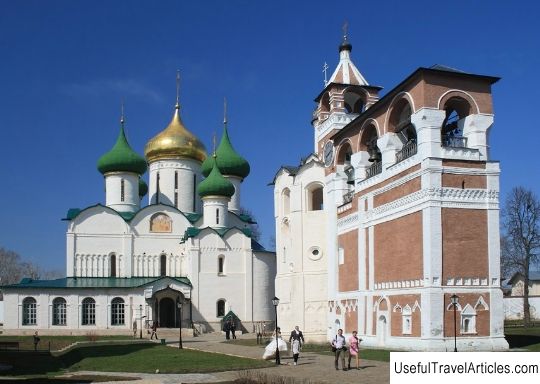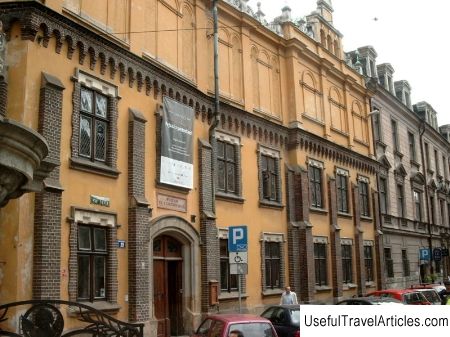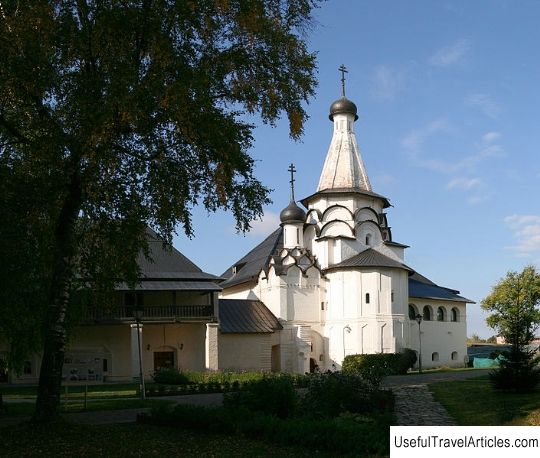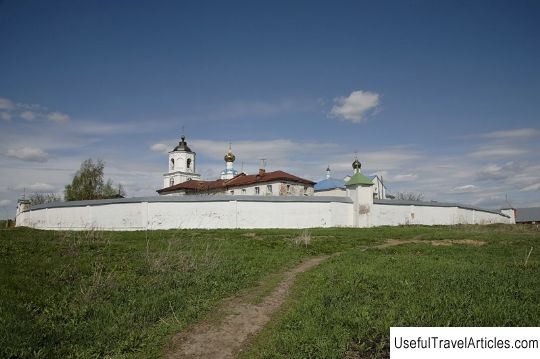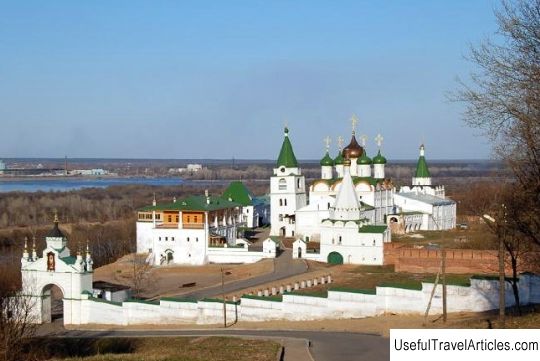Spaso-Evfimievsky Monastery description and photos - Russia - Golden Ring: Suzdal
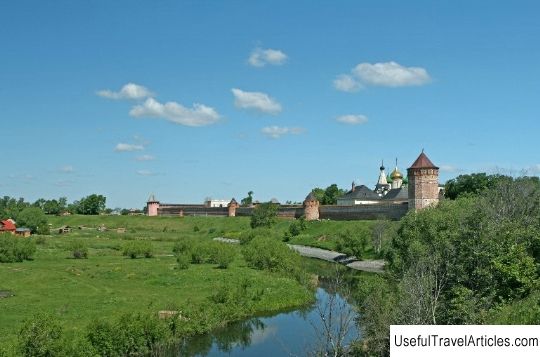
Spaso-Evfimievsky monastery description and photos - Russia - Golden Ring: Suzdal. Detailed information about the attraction. Description, photos and a map showing the nearest significant objects. Photo and descriptionSpaso-Euthymius Monastery was founded in Suzdal in 1350 under the Suzdal-Nizhny Novgorod Prince Konstantin Vasilievich. The monastery is located on the steep bank of the Kamenka River. Its mighty walls of the 16th century with loopholes and high towers of various types stand out with their pinkish color among the banks, reflected in the smooth surface of the river. The architectural complex of the monastery is included in the UNESCO World Heritage List. Prince Pozharsky is buried near the walls of the monastery. His funeral took place in 1642, and the tombstone installed on the grave was erected in 1974. From 1767 to 1905 the monastery served as a central prison for dissidents. The most inhuman punishments were applied to the prisoners here, and this place began to enjoy a bad reputation. The monastic complex includes: the Transfiguration Cathedral (1564), the tent-roofed Assumption Church (1525), the monastic household and residential buildings, the belfry (XVI-XVII centuries). Nowadays, the belfry has been completely restored, and bells are hanging on it again. The main temple of the monastery - the Transfiguration Cathedral - was built in the tradition of the ancient white-stone architecture of Suzdal, it is monumental and austere. The pride of the cathedral is the frescoes of the 16th century, discovered by restorers on the facades, and the paintings of the famous masters of the 17th century, Guriy Nikitin and Sila Savin. The Annunciation Gate Church, built in 1624, was the Holy Gate of the monastery and originally, before the construction of the stone fence, was the facade of the monastery and only in 1664, after the construction of the walls, was inside the fence. The window openings of the southern facade and the icon case of the church have different decorative treatment of the platbands, which speaks of the love of Suzdal craftsmen for a variety of decorative finishing. The Assumption Refectory Church in Suzdal, built in 1525, stands out for its high octahedral tent, set on tiers of kokoshniks and a massive quadrangle. On its eastern side, three apses, separated by edges, have narrow window openings. At the lower parts of the apses there is an original decorative design, consisting of small kokoshniks with pots inserted into them with a throat on the facade, filled with lime, forming circles of a regular shape. This is a rare technique for decorative processing of a building facade. This is one of the earliest monuments of hipped-roof type architecture in the history of ancient Russian architecture. talking about the love of Suzdal craftsmen for a variety of decorative finishes.The Assumption Refectory Church in Suzdal, built in 1525, stands out for its high octahedral tent, set on tiers of kokoshniks and a massive quadrangle. On its eastern side, three apses, separated by edges, have narrow window openings. At the lower parts of the apses there is an original decorative design, consisting of small kokoshniks with pots inserted into them with a throat on the facade, filled with lime, forming circles of a regular shape. This is a rare technique for decorative processing of a building facade. This is one of the earliest monuments of hipped-roof architecture in the history of ancient Russian architecture. talking about the love of Suzdal craftsmen for a variety of decorative finishes.The Assumption Refectory Church in Suzdal, built in 1525, stands out for its high octahedral tent, set on tiers of kokoshniks and a massive quadrangle. On its eastern side, three apses, separated by edges, have narrow window openings. At the lower parts of the apses there is an original decorative design, consisting of small kokoshniks with pots inserted into them with a throat on the facade, filled with lime, forming circles of a regular shape. This is a rare technique for decorative processing of a building facade. This is one of the earliest monuments of hipped-roof architecture in the history of ancient Russian architecture. built in 1525, it stands out for its high octahedral tent, set on tiers of kokoshniks and a massive quadrangle. On its eastern side, three apses, separated by edges, have narrow window openings. At the lower parts of the apses there is an original decorative design, consisting of small kokoshniks with pots inserted into them with a throat on the facade, filled with lime, forming circles of a regular shape. This is a rare technique for decorative processing of a building facade. This is one of the earliest monuments of hipped-roof architecture in the history of ancient Russian architecture. built in 1525, it stands out for its high octahedral tent, set on tiers of kokoshniks and a massive quadrangle. On its eastern side, three apses, separated by edges, have narrow window openings. At the lower parts of the apses there is an original decorative design, consisting of small kokoshniks with pots inserted into them with a throat on the facade, filled with lime, forming circles of a regular shape. This is a rare technique for decorative processing of a building facade. This is one of the earliest monuments of hipped-roof architecture in the history of ancient Russian architecture. consisting of small kokoshniks with pots inserted into them on the facade, filled with lime, forming circles of a regular shape. This is a rare technique for decorative processing of a building facade. This is one of the earliest monuments of hipped-roof architecture in the history of ancient Russian architecture. consisting of small kokoshniks with pots inserted into them on the facade, filled with lime, forming circles of a regular shape. This is a rare technique for decorative processing of a building facade. This is one of the earliest monuments of hipped-roof architecture in the history of ancient Russian architecture.         We also recommend reading Hassan Tower description and photos - Morocco: Rabat Topic: Spaso-Evfimievsky Monastery description and photos - Russia - Golden Ring: Suzdal. |
